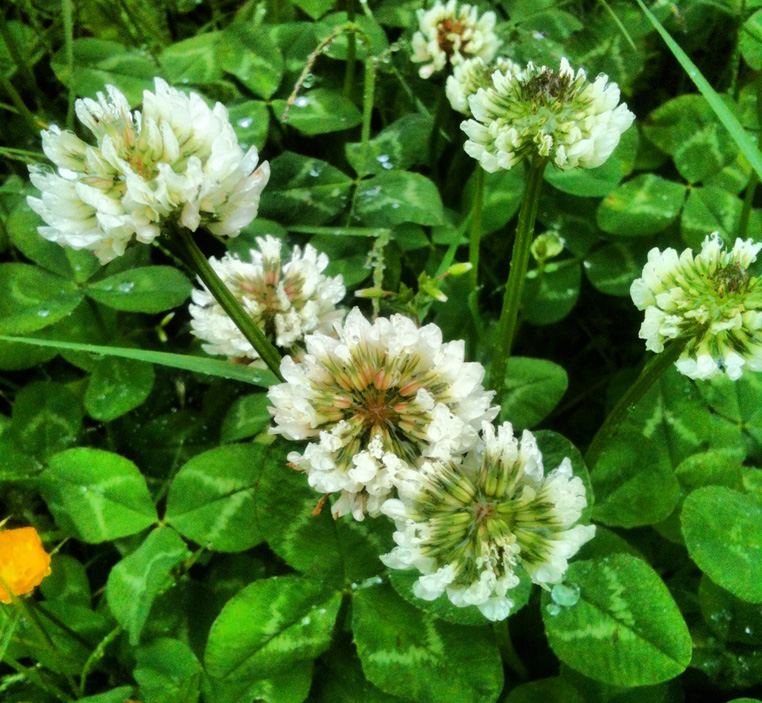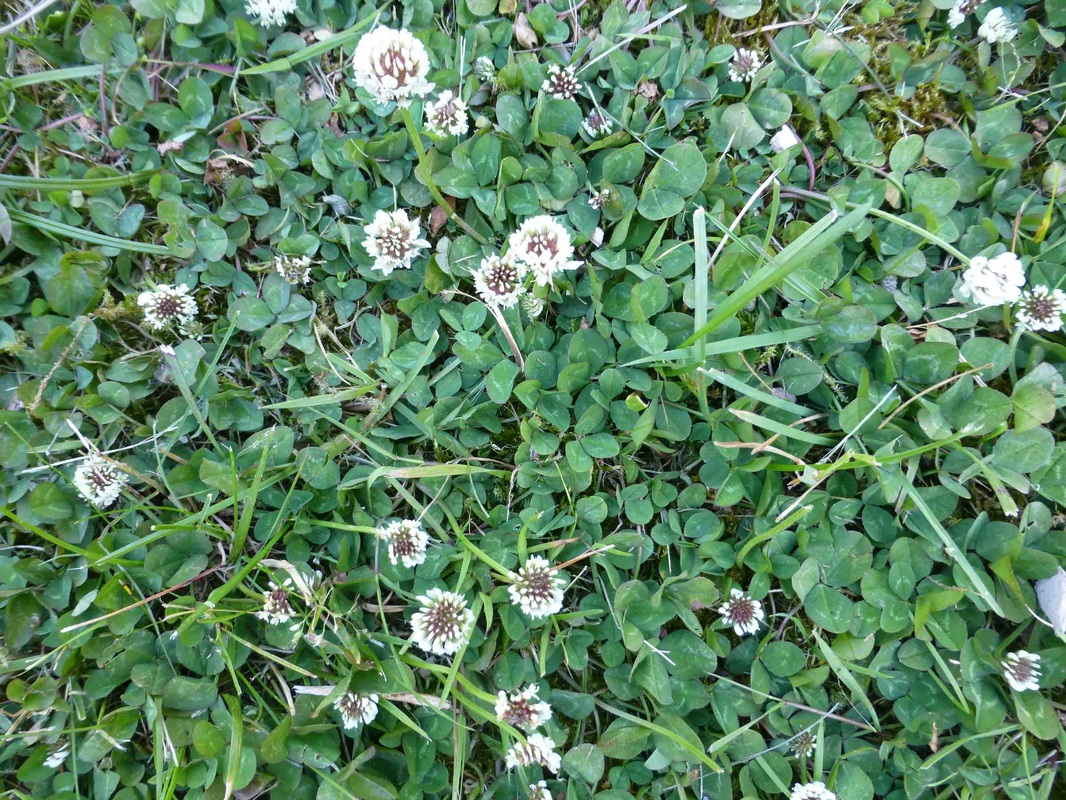White clover • Trifolium repens
{clover = from clava, which means club and refers to the leaf shape}
Identification
This introduced perennial is a common and familiar plant. Its creeping stems, which grow to 60 cm long, attach to the ground via roots at nodes so the plain remains fairly low-lying. Each stem is topped with a dense head of many small pea-like flowers (this head may initially look like one large many-petaled flower). These flowers are white or pinkish-white. The leaves, which grow on long stalks, are composed of three finely-toothed leaflets; four leaflets are rare and, of course, considered lucky.
Habitat & Range
White clover, which was introduced from Eurasia, grows in disturbed habitats such as roadsides, lawns, and fields. It is found at low to subalpine elevations throughout most of BC and across North America. It is less common in northern Canada.
Similar Species
Springbank clover (Trifolium wormskijoldii) is a native species also with compound leaves composed of three leaflets, but its flowers are red to purple. Alsike clover (T. hybridum) is an introduced species with pinker flowers and stems that do not tend to root at nodes, and so grow upright to 60 cm tall. Red clover (T. pratense) has leaves growing on the flower stalks, immediately below the flowers; its flowers are pinkish-purple to red.
This introduced perennial is a common and familiar plant. Its creeping stems, which grow to 60 cm long, attach to the ground via roots at nodes so the plain remains fairly low-lying. Each stem is topped with a dense head of many small pea-like flowers (this head may initially look like one large many-petaled flower). These flowers are white or pinkish-white. The leaves, which grow on long stalks, are composed of three finely-toothed leaflets; four leaflets are rare and, of course, considered lucky.
Habitat & Range
White clover, which was introduced from Eurasia, grows in disturbed habitats such as roadsides, lawns, and fields. It is found at low to subalpine elevations throughout most of BC and across North America. It is less common in northern Canada.
Similar Species
Springbank clover (Trifolium wormskijoldii) is a native species also with compound leaves composed of three leaflets, but its flowers are red to purple. Alsike clover (T. hybridum) is an introduced species with pinker flowers and stems that do not tend to root at nodes, and so grow upright to 60 cm tall. Red clover (T. pratense) has leaves growing on the flower stalks, immediately below the flowers; its flowers are pinkish-purple to red.
References
Pojar, J. and MacKinnon, A. (1994). Plants of Coastal British Columbia. Vancouver, BC: Lone Pine Publishing. P. 196.
Trifolium repens L. Klinkenberg, Brian. (Ed.). E-Flora BC: Electronic Atlas of the Plants of British Columbia. Lab for Advanced Spatial Analysis, Department of Geography, University of British Columbia, Vancouver. Accessed 31/03/2016.
Authors and editors of page
Kelly Fretwell (2016).
Pojar, J. and MacKinnon, A. (1994). Plants of Coastal British Columbia. Vancouver, BC: Lone Pine Publishing. P. 196.
Trifolium repens L. Klinkenberg, Brian. (Ed.). E-Flora BC: Electronic Atlas of the Plants of British Columbia. Lab for Advanced Spatial Analysis, Department of Geography, University of British Columbia, Vancouver. Accessed 31/03/2016.
Authors and editors of page
Kelly Fretwell (2016).





